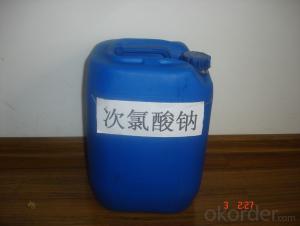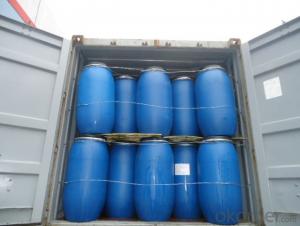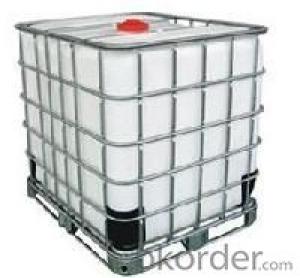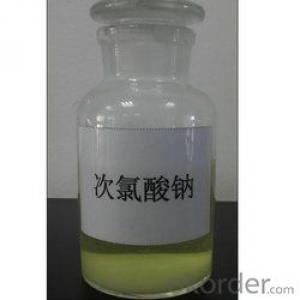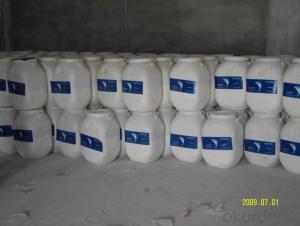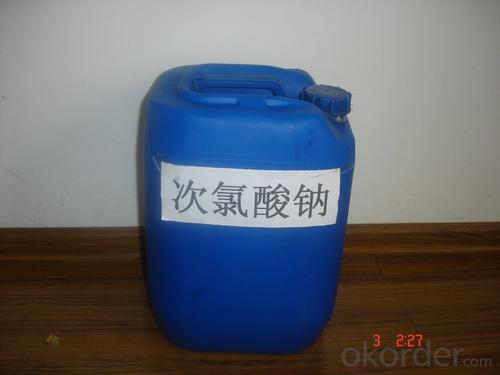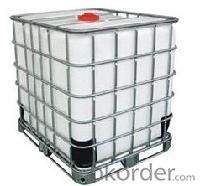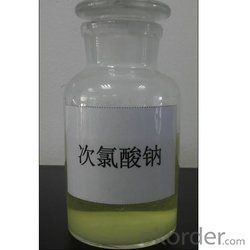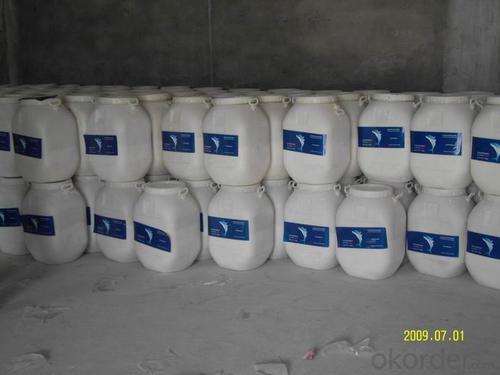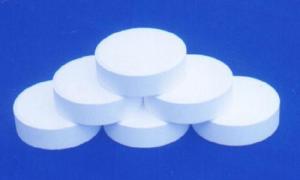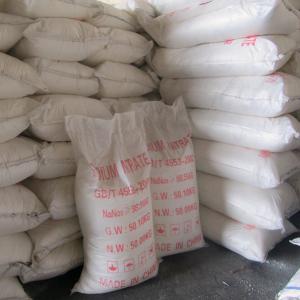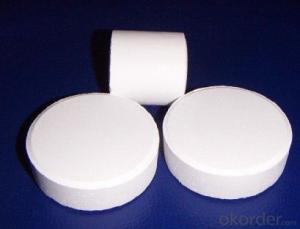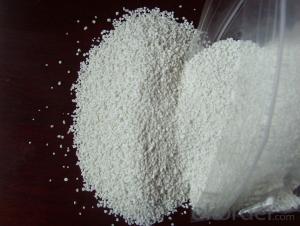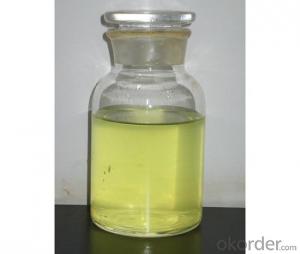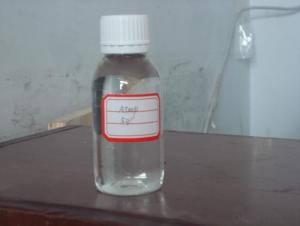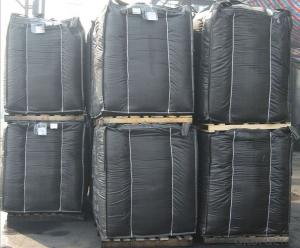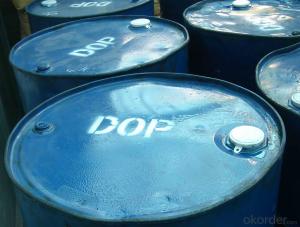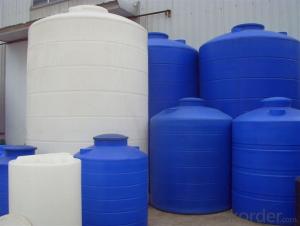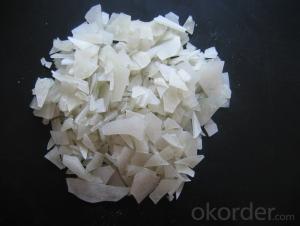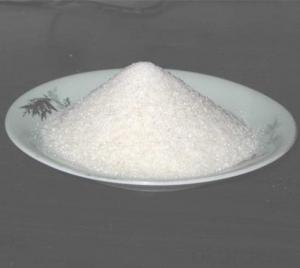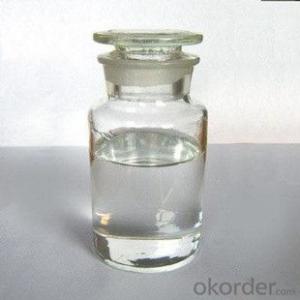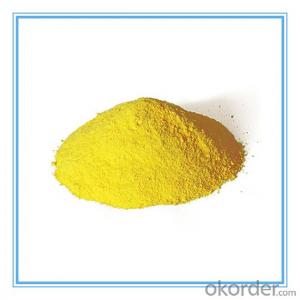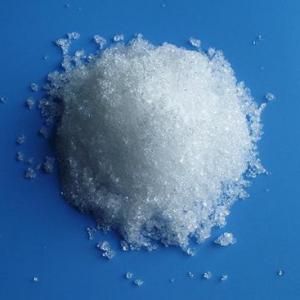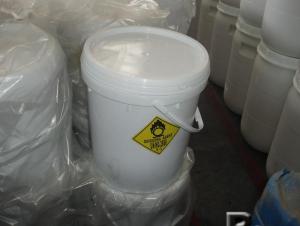Sodium Hypochlorite Solution National Standard Quality
- Loading Port:
- Tianjin
- Payment Terms:
- TT OR LC
- Min Order Qty:
- 25 m.t.
- Supply Capability:
- 6000 m.t./month
OKorder Service Pledge
OKorder Financial Service
You Might Also Like
Sodium Hypochlorite
CAS NO: 7681-52-9
Chemical Formula: NaClO
Molecular Weight: 74.44
Appearance: Yellow transparent Liquid
Standard: HG/T2498-1993
Specification:
Available Chlorine: 8%-16%
NaOH: 1% Max
Transportation Info:
Class: 8 UN NO: 1791 PG:III
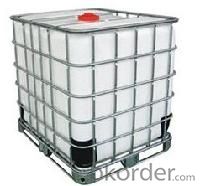
Application:
Disinfection for swimming pool, drinking water, cooling tower and sewage and waste water, food, and farming, hospital, school, station and household etc
Good bleaching and oxidation in paper and dye industry.
Normal Packing: 30kg drum, 1200kg IBC Tank
sodium hypochlorite 10%-15% for disinfectant Product details
CAS No.: 7681-52-9
Other Names: Sodium Hypochlorite
MF: NaOCl
EINECS No.: 231-668-3
Place of Origin: Tianjin China (Mainland)
Purity: 10%-13%
Classification: General Reagents
Brand Name: Xibeier Sodium Hypochlorite
Model Number: TX-SH01
Appearance: Yellowish solution
color: white
Application: For waste water treatment
Specification
NO | Test items | Model Specification | ||
Bb | ||||
I | II | III | ||
Indicators | ||||
1 | Chlorine ( Cl ) ≥ | 13.0 | 12.0 | 10.0 |
2 | Free Alkali ( NaOH ) | 0.1~1.0 | ||
3 | Iron ( Fe ) ≤ | 0.005 | ||
Appearance | Light yellow liquid | |||
- Q: When there is a catalyst in the chemical equation, it is not necessary to match the atoms of the catalyst
- The habit of writing is not to write the catalyst involved in the equation, it is usually written in the equation above the equal or below
- Q: Biological enzymes and chemical catalysts of the differences in the source, nature and catalytic characteristics of the different, specific point
- Biological enzyme catalytic reaction conditions are mild, high selectivity, can not be infected
- Q: what is the role of a catalyst in a chemical reaction?
- It increases the rate of reaction by lowering the requirement of energy needed to carry out the chemical reaction. Hope that helped.
- Q: Briefly define a homogenous catalyst? Help please!?
- A homogenous catalyst is in the same phase as the rxn it is catalyzing. Most people think of catalysts as heterogenous: either sold (cat) liquid (rxn) (Raney Ni hydrogenation) or solid (cat) gas phase rxn) (catalytic convertors, NH3 production, SO2 oxidation, nitric acid production) polyethylene synthesis with Ziegler Natta catalysts. (Wikipedia). However starting probably with the Wilkinson hydrogenation catalyst Rh(PPh3)3Cl in 1966 a whole field of homogeneous catalysis has develope where the catayst is in soln. It proved to be a Renaissance for Inorg chem. These catalysts have several advantages over heterogenous catalysts: take place under mild conditions (green chem); the mechanisms are usually understood and can therefore be modified to be extremely specific for a substrate. There have been several Nobel Prizes in this area in the last decade because of their importance in organic synthesis: 2010, 2005, 2001. The one type of homolytic gas phase catalysis rxn I can think of are those that involve a radical chain mechanism: destruction of O3 by Cl? and chlorination (bromination) of alkanes.
- Q: Co and No form a chemical equation for Co2 and No2 under the action of a catalyst
- Write the catalyst on the horizontal line, where NO is the oxidant and CO is the reducing agent
- Q: Hydrogen and nitrogen in the high temperature and pressure and catalyst conditions for the synthesis of ammonia chemical equation
- 3H2 + N2 = 2NH3 conditional catalyst
- Q: Word editor when playing chemical equation = with the above conditions or how to adjust the size of the catalyst, how to make it centered,
- Open the word - insert - object - WPS3.0 formula - and then select the "label arrow template", you can add a catalyst.
- Q: What are the catalysts?
- The catalyst is a substance that can change the rate of the reaction without changing the standard of the reaction Gibbs free, according to the definition of the International Pure and Applied Chemistry (IUPAC) in 1981, Enthalpy change. This action is called catalysis. The reaction involving the catalyst is a catalytic reaction. The catalyst will induce a chemical reaction to change, causing the chemical reaction to become faster or slower or to undergo a chemical reaction at a lower temperature The catalyst is also known as a catalyst in industry, and the composition, chemical properties and quality of the catalyst itself do not change before and after the reaction;
- Q: I have just spent CAN$550 to replace a catalyst converter at one end of the muffler. The repairman said I need to replace the oxygen sensor very soon, otherwise, the C.C. will be gone again. Is that true... can someone confirm this for me. Thanks.
- ok its not catalyst converter its catalytic converter. next i have not read one answer that is correct a couple are close but no cigar. ok the 02 sensor senses the oxygen content in the exhaust gasses. using the oxygen content it can determine if the engine is running to rich or to lean. the ecm (computer) wants to keep the engine at optimum fuel mileage or keep it stoichometric meaning fuel to air ratio of 14.7:1 the ecm can adjust fuel air ratios by changing the pulse width and the duty cycle or on off time of the injector.it also uses several other sensors to help it like intake air temp (iat) coolant temp (cts) mass air readings if equipped (MAF) or manifold absolute pressure (map) so its not just the oxygen sensor it can make adjustments as need. anyways the oxygen sensor uses a .1 to .9 volt range signal anything below .450 is lean anything above .450 is rich and .4 to .5 is perfect. but ur engine constantly changes and the 02 readings change constantly new cars can take readings as fast as one or two times a second older cars are alittle slower. anyways only replace the 02 sensor if the car is telling u its bad meaning u have a check engine light on and a code that says P 0 . . . bank one sensor one ckt malfunction or bank 2 sensor 1 ckt malfunction u get the idea unless that happens ur 02's are good leave them alone. when they do go bad ur car will run rich and puke alittle black smoke out the exhaust and ur car will smell like rotten eggs. NOW the cat its job is to heat up to 600 + degreees F and burn unburnt fuel from the combustion cycle of the engine when an engine does not burn all its fuel its running rich and bad fuel milage occurs. if the 02 sensor goes out it can heat the cat red hot as the extra fuel being burnt inside it can become extremely hot. most 02 sensor for most vehicles run around 60 bucks not expensive. a car can have 1 to 4 of these and YES if bad and left for too long and can ruin a cat converter.
- Q: Are the catalysts for upgrading the weapons components that i may have a few of, or very rare ones?
- catalyst's cannot be used apart from transforming items. They will be greyed out at all other times. They always say in the description can be used as a catalyst as well. btw, are you using 36 sturdy bones or vibrance ooze to get the 3x multiplyer strait up? oh yeah, never ever use any item at all that says can be sold for a premium. Always sell those items, they are worth lots of money. And when you start buying components, only ever buy particle accelerator, perfect conductor or ultra compact reactor. Perfect conductor gives least bang for $$$ out of the 3, whereas ultra compact reactor gives most bang for $$$. And the sturdy bones and vibrance ooze for multiplyer purposes. Hope this helped :)
Send your message to us
Sodium Hypochlorite Solution National Standard Quality
- Loading Port:
- Tianjin
- Payment Terms:
- TT OR LC
- Min Order Qty:
- 25 m.t.
- Supply Capability:
- 6000 m.t./month
OKorder Service Pledge
OKorder Financial Service
Similar products
Hot products
Hot Searches
Related keywords
